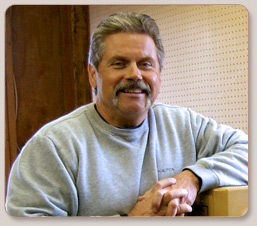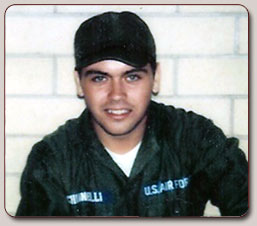Biography
Born in the Chicago area at the peak of the baby boomer years in 1957, I lived my first eighteen years like most Midwestern boys of the 60’s and 70’s. After graduating high school I worked briefly building Pullman railroad cars and pickling steel, long enough to know I could not do this type of work the rest of my life.
Born into the Space Age, it would become my way of life. In 1957, the space race was started when the Soviet Union launched Sputnik 1 and the US launched Explorer shortly thereafter. In late 1957 the United States and the USSR both successfully launched Intercontinental Ballistic Missiles (ICBMs) for the first time. Twenty years later, I started my aerospace career upon entry into the US Air Force. Testing well in electronics, I decided on a career in ICBMs, the ultimate weapon of the cold war era. The late 1970’s and 1980’s saw resurgence in cold war weaponry between the two super powers. This would mark the beginning of the end to the cold war. At the time, it was about posturing between the two countries and being a Cold Warrior was serious business.
After completing 6 months of training at Chanute, AFB in Illinois, my options for base assignment were limited to the few Strategic Air Command (SAC) Minuteman ICBM operational sites located in the frigid north central interior states or idyllic Vandenberg AFB along the coast of central California. I was the last airman to be assigned to the missile test base directly from technical school. This good fortune ensured my life would be forever changed as I soon became enamored with California and the lifestyle it offered.
My job was to launch Minuteman missiles that were brought to Vandenberg AFB from operational bases were they were sitting on alert in silos since the early 1960’s. We test launched to demonstrate reliability and accuracy. With Russian “fishing trawlers” positioned off the coast, we launched about twelve missiles a year. Punching 60 foot missiles out of a hole in the ground at 200,000 pounds of thrust and attaining a speed of mach 23 was pretty cool, exciting and filled with pride. Having excelled in my air force career, I could have easily made this one of the best careers of any time. I lived off base almost entirely during my career, held occasional side jobs and went to night school. Young and ambitious, I became anxious for a new challenge and grew weary of the restrictive military life style.
I decided I would leave the Air Force at the end of my enlistment. I was honorably discharged in 1981 and was immediately employed by Ford Aerospace at Vandenberg Tracking Station. My new civilian job was to track military satellites and the new Space Shuttle launches. Exciting and challenging at first, the nature of tracking satellites quickly became mundane. After a couple of years, I yearned for a more cultural and big ciy locale. I eventually transferred to the “Blue Cube” in Sunnyvale, CA in 1983 were I continued tracking satellites for better than a year before transferring in-house. Sunnyvale would become my home for the next twenty years. I would witness the birth and be part of the high tech center of the world, Silicon Valley.
Out of the field and into the fold where satellite tracking research and development took place, I was responsible for the central computer lab where the DEC VAX mainframe running VMS was the leading edge mainframe of the day and the personal computer was just coming on to the scene. This job provided the perfect opportunity to network into a position as an R&D Engineer. I transferred to the Western Development Labs division of Ford Aerospace where I worked the test and integration of a battleground communication system for the army. I was eventually promoted to Senior R&D Engineer when I started a new program supporting U2 reconnaissance. Working this program to completion a few years later, my career as a Cold Warrior ended as the world saw the end to communism in 1989.
Ford Aerospace eventually was obtained by Loral Aerospace which was finally purchased by defense behemoth Lockheed Martin in the early 1990’s. I would work six different programs for three different companies over seventeen years, all under one corporate umbrella. About ten years into my career, I moved into systems engineering where I provided marketing support for a radiology image storage and retrieval system. I designed, priced and pitched these systems at hospitals and trade shows across the country.
I eventually transferred to Space Systems Loral division where I would finish my career as a Senior Systems Engineer. I initially provided support to the international space station program which was over budget and behind schedule with Congress threatening to cancel. I quickly moved on to something more familiar and sustainable, the satellite business. I supported satellite ground station upgrades to Mitsubishi in Japan and helped sell a commercial satellite system to the Philippines. By the time these programs completed, defense downsizing was in full swing and satellite telephone technology was emerging into the market.
Lockheed eventually spun-off the first major satellite telephone company, Globalstar. I was part of the development, test and implementation of the first satellite control center. I turned down a transfer opportunity with Globalstar and instead finished my career working a proposal with NASA’s Jet Propulsion Laboratory to provide a satellite ground station in support of scientific solar studies. Soon thereafter, I decided to leave what was now Lockheed and retired in December 1998.
I had started pottery classes in November 1997. I am not sure why, but I had an intuitive sense at that time that pottery is what I needed to do. With a year of ceramics experience at retirement, I had become captivated by this art form. Initially, I relied on community pottery classes and local college courses to practice what would become my next “career”.
By 2001, I had started to build a home pottery studio in the basement. Over the next several years, pottery became my focus. By 2008, my studio had become fully developed. (For more information about my pottery growth and studio development please visit Pottery Process on this site) Also during this time, I expanded my art world to include wood turning. I look forward to eventually marrying pottery and wood turning into a new art form. (For more information about my wood turning please visit Wood Turning Process on this site)
Through the transition from corporate world to art world, I have reinvented myself personally and artistically. My life and my art have become more intrinsically entwined. I have attained a comfort level, not of complacency, but of knowing that I have the ability to change and adapt. I approach my craft as I do my life in neither stop growing.






